I have a pulse width modulation (PWM) control board that uses a 0-5V input via a potentiometer to control a DC motor speed. As I understand how this works, the potentiometer goes from 0% PWM at 0V to 100% PWM at 5V. I want to use a pressure sensor that outputs .5VDC at 0 PSI to 4.5VDC at 100 PSI to control the DC motor. Specifically, the controller will need to be at 100% PWM when the pressure is 0, and 0% PWM (off) when the pressure is at 43 PSI or 2.2VDC.
I found a somewhat similar question here, How do I invert the output of this current sensor using the other side of the LM358? but the answer was not clear to me.
